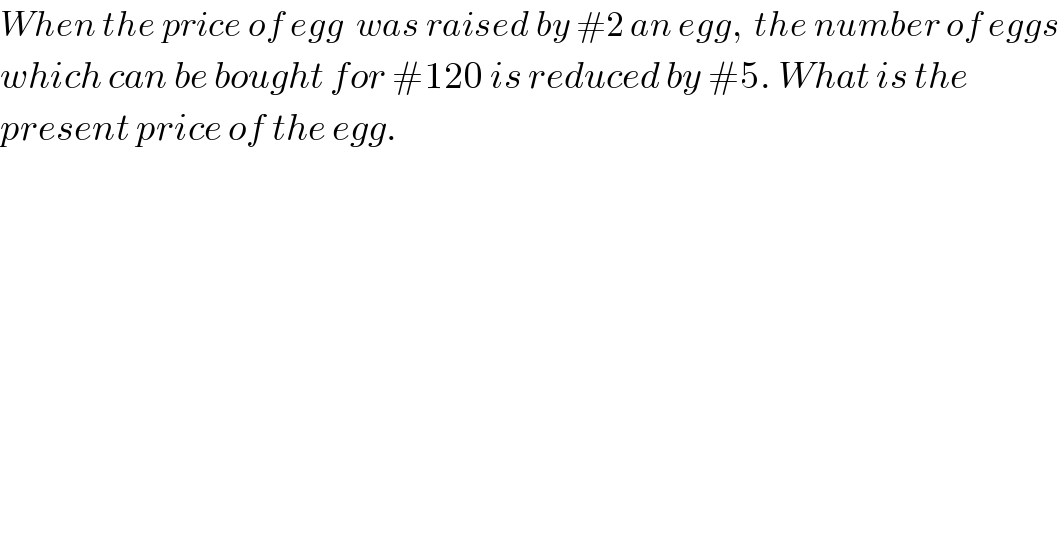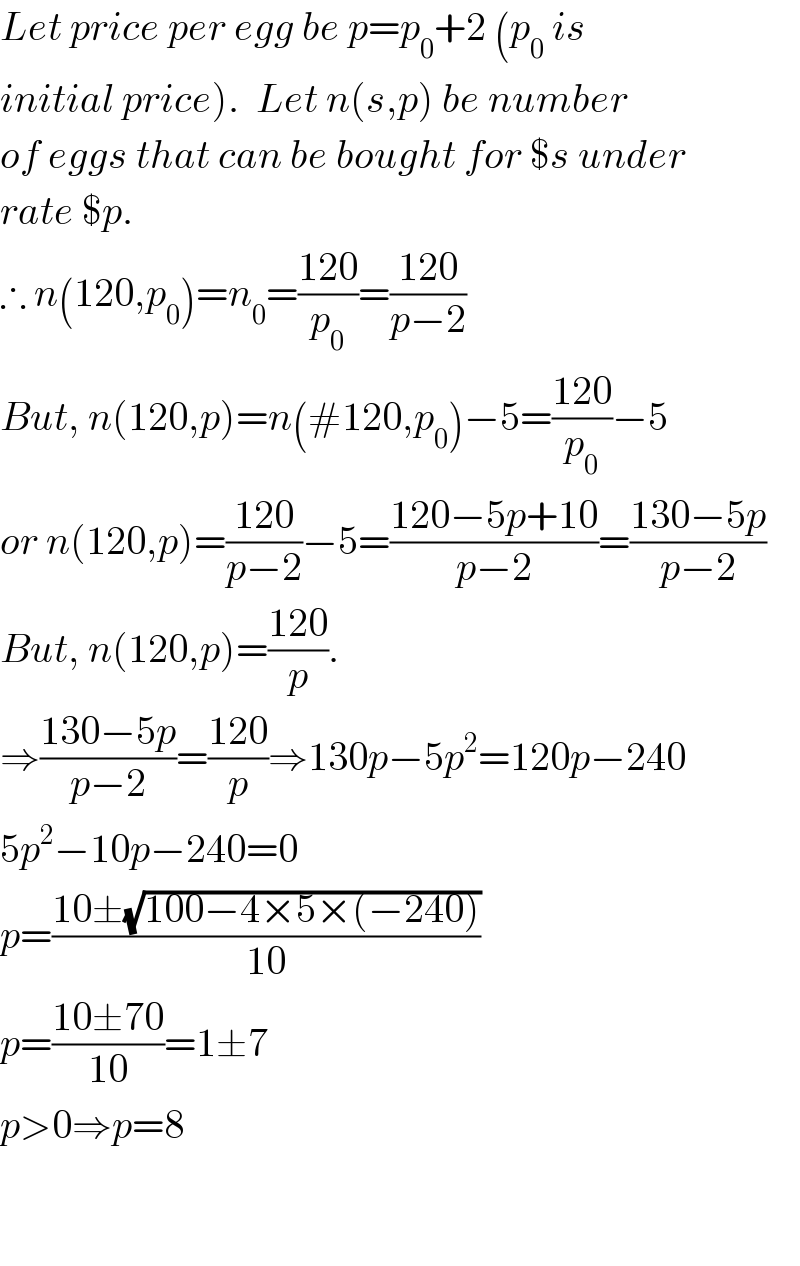Question Number 6792 by Tawakalitu. last updated on 26/Jul/16

$${When}\:{the}\:{price}\:{of}\:{egg}\:\:{was}\:{raised}\:{by}\:#\mathrm{2}\:{an}\:{egg},\:\:{the}\:{number}\:{of}\:{eggs} \\ $$$${which}\:{can}\:{be}\:{bought}\:{for}\:#\mathrm{120}\:{is}\:{reduced}\:{by}\:#\mathrm{5}.\:{What}\:{is}\:{the} \\ $$$${present}\:{price}\:{of}\:{the}\:{egg}. \\ $$
Commented by Yozzii last updated on 27/Jul/16

$${Let}\:{price}\:{per}\:{egg}\:{be}\:{p}={p}_{\mathrm{0}} +\mathrm{2}\:\left({p}_{\mathrm{0}} \:{is}\right. \\ $$$$\left.{initial}\:{price}\right).\:\:{Let}\:{n}\left({s},{p}\right)\:{be}\:{number} \\ $$$${of}\:{eggs}\:{that}\:{can}\:{be}\:{bought}\:{for}\:\${s}\:{under} \\ $$$${rate}\:\${p}. \\ $$$$\therefore\:{n}\left(\mathrm{120},{p}_{\mathrm{0}} \right)={n}_{\mathrm{0}} =\frac{\mathrm{120}}{{p}_{\mathrm{0}} }=\frac{\mathrm{120}}{{p}−\mathrm{2}} \\ $$$${But},\:{n}\left(\mathrm{120},{p}\right)={n}\left(#\mathrm{120},{p}_{\mathrm{0}} \right)−\mathrm{5}=\frac{\mathrm{120}}{{p}_{\mathrm{0}} }−\mathrm{5} \\ $$$${or}\:{n}\left(\mathrm{120},{p}\right)=\frac{\mathrm{120}}{{p}−\mathrm{2}}−\mathrm{5}=\frac{\mathrm{120}−\mathrm{5}{p}+\mathrm{10}}{{p}−\mathrm{2}}=\frac{\mathrm{130}−\mathrm{5}{p}}{{p}−\mathrm{2}} \\ $$$${But},\:{n}\left(\mathrm{120},{p}\right)=\frac{\mathrm{120}}{{p}}. \\ $$$$\Rightarrow\frac{\mathrm{130}−\mathrm{5}{p}}{{p}−\mathrm{2}}=\frac{\mathrm{120}}{{p}}\Rightarrow\mathrm{130}{p}−\mathrm{5}{p}^{\mathrm{2}} =\mathrm{120}{p}−\mathrm{240} \\ $$$$\mathrm{5}{p}^{\mathrm{2}} −\mathrm{10}{p}−\mathrm{240}=\mathrm{0} \\ $$$${p}=\frac{\mathrm{10}\pm\sqrt{\mathrm{100}−\mathrm{4}×\mathrm{5}×\left(−\mathrm{240}\right)}}{\mathrm{10}} \\ $$$${p}=\frac{\mathrm{10}\pm\mathrm{70}}{\mathrm{10}}=\mathrm{1}\pm\mathrm{7} \\ $$$${p}>\mathrm{0}\Rightarrow{p}=\mathrm{8} \\ $$$$ \\ $$$$ \\ $$
Commented by Tawakalitu. last updated on 27/Jul/16

$${Thanks}\:{so}\:{much}\:{for}\:{your}\:{help} \\ $$
